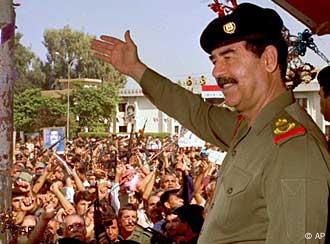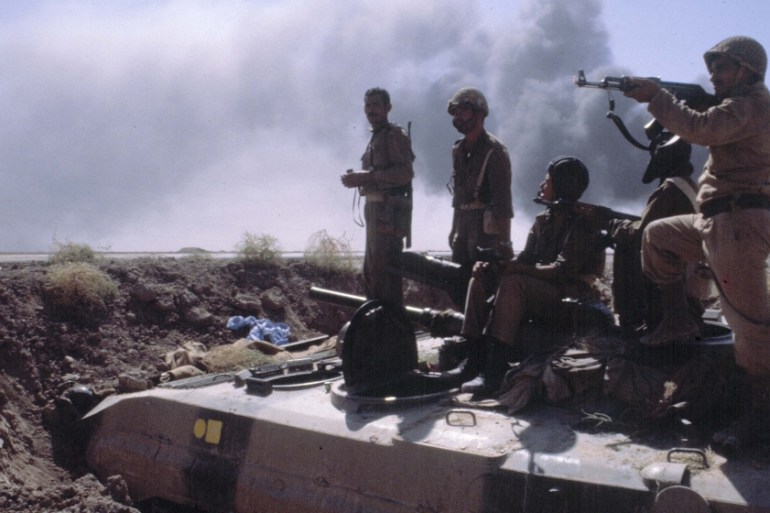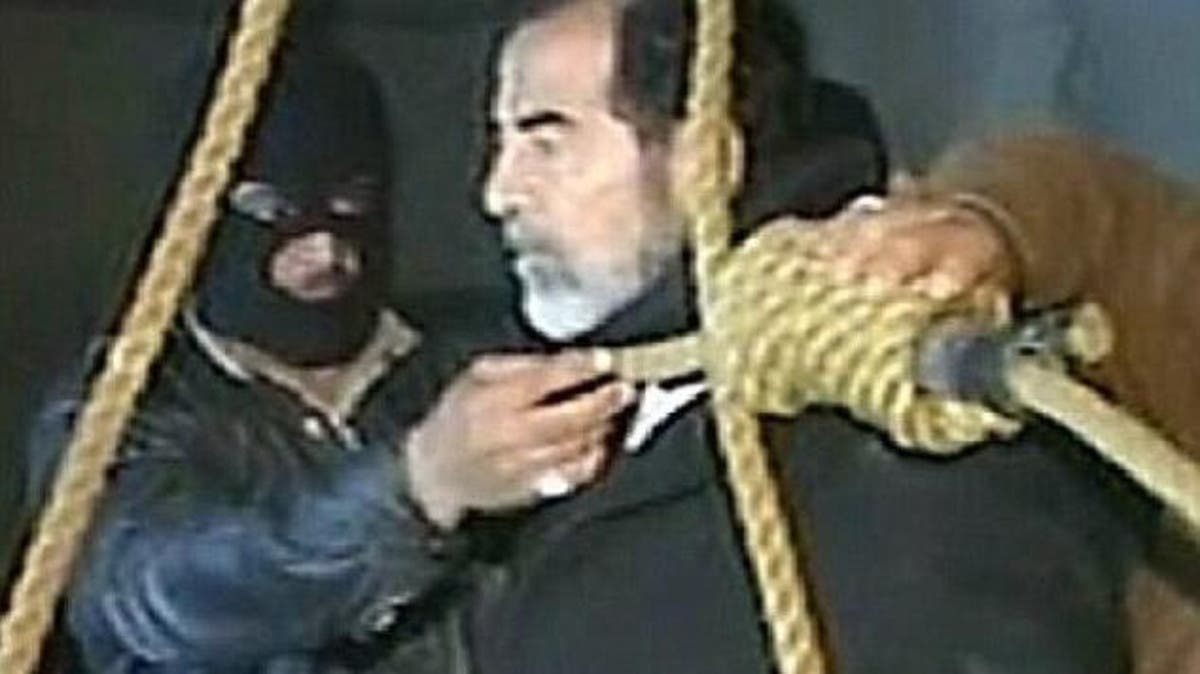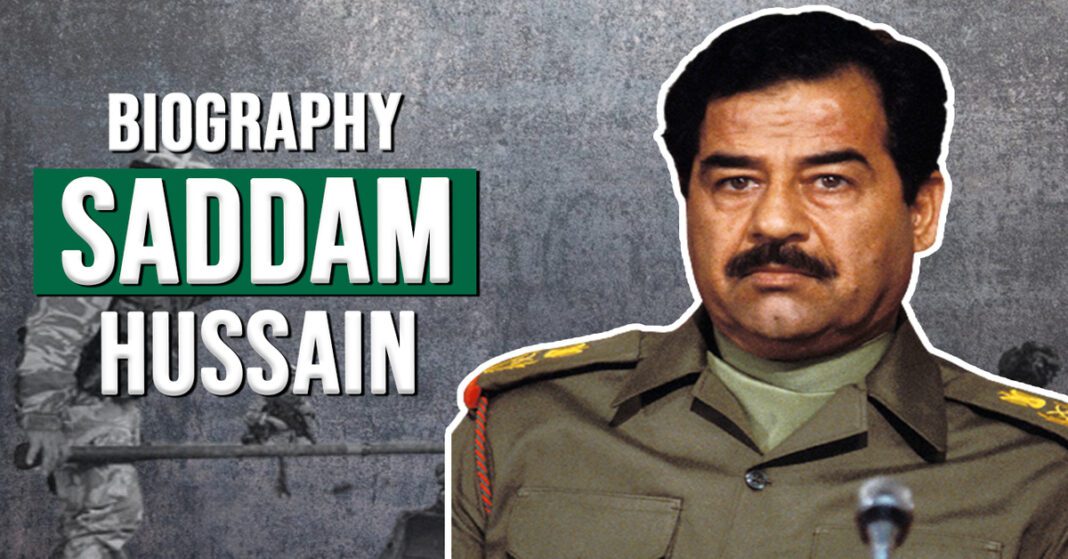Who Was Saddam Hussein?
Saddam Hussein was a secularist who worked his way up through the Baath party to become a dictator. Under his rule, some people took advantage of the oil wealth. He subjected everyone who stood in his way to gruesome torture before killing them. After a battle with U.S.-led forces, Saddam Hussein was captured in 2003. The eventual result was his death.

Early Life
Hussein was born in the Iraqi city of Tikrit on April 28, 1937. Saddam’s father, who was a shepherd, went missing a few months before he was born. His older brother died of cancer a few months later. Saddam’s mother was very sad after the death of her oldest son and the disappearance of her husband. She was unable to care for Saddam well. He went to live with his uncle Khairallah Talfah in Baghdad. Years later, Saddam hussein moved back to Al-Awja to live with his mother. But when his stepfather hurt him, he ran away to Baghdad to live with Talfah. Who was a religious Sunni Muslim and passionate Arab nationalist whose politics had a big impact on the young Saddam.

After going to the nationalistic al-Karh Secondary School in Baghdad. Saddam joined the Ba’ath Party in 1957, when he was 20 years old. The Ba’ath Party’s main goal was to unite Arab states in the Middle East.
Saddam hussein and other members of the Ba’ath Party tried to kill Iraq’s president, Abd al-Karim Qasim, on October 7, 1959. Because Qasim refused to join the new United Arab Republic and worked with Iraq’s communist party.
Qasim’s driver was killed, and he was shot numerous times, but he managed to get away. There was a bullet wound in Saddam’s leg. Assailants for Saddam Hussein have been captured and killed in large numbers. They went to Syria, where Saddam stayed for a short time before going to Egypt to go to law school.
Rise to Power
When Qasim’s regime was defeated in the so-called Ramadan Revolution in 1963, Saddam hussein returned to Iraq. However, due to internal strife within the Ba’ath Party, he was detained the following year. But even while incarcerated, he continued to be active in politics, and in 1966 he was named the Regional Command’s deputy secretary. He soon succeeded in breaking out of jail, and during the years that followed, he kept building up his political influence.

In 1968, Ahmed Hassan al-Bakr became president of Iraq. Saddam served as his vice president as a consequence of a bloodless but effective Ba’athist coup in which Saddam took part. Saddam demonstrated throughout al-administration Bakr’s that he was a competent and progressive politician, but one who was unquestionably brutal. He significantly improved Iraq’s infrastructure, economy, and healthcare system. He also increased social services, education, and agriculture subsidies to levels unmatched in other Arab nations in the area.
Prior to the 1973 energy crisis, he nationalised the oil sector in Iraq as well, generating enormous earnings for the country. The People’s Army and Ba’athist paramilitary groups were part of the powerful security apparatus that Saddam built during that time, but he also assisted in the development of Iraq’s first chemical weapons programme and put in place measures to prevent coups, including the use of torture, rape, and assassination.
Al-Bakr sought to merge Iraq and Syria in 1979, a move that would have rendered Saddam essentially impotent. In response, Saddam compelled al-Bakr to retire, and on July 16, 1979, Saddam was elected president of Iraq. The Ba’ath Party’s assembly was summoned by him less than a week later. While the meeting was in session, a list of 68 names was read out, and everyone on it was promptly arrested and removed from the building. These 68 individuals had treason trials, were all found guilty, and 22 received death sentences. By the beginning of August 1979, Saddam had executed a number of his political adversaries.
Decades of Conflict
Ayatollah Khomeini successfully steered the Islamic revolution in Iran, Iraq’s northeastern neighbour, in the same year that Saddam became the presidency. Saddam hussein was concerned that events in Iran, which has a Shiite majority, may trigger an uprising similar to the one that occurred in Iraq. His political authority depended in part on the support of Iraq’s minority Sunni population.

In retaliation, Saddam ordered Iraqi soldiers to attack the oil-rich area of Khuzestan in Iran on September 22, 1980. The conflict quickly escalated into a full-scale war, but despite the fact that Saddam’s invasion of Iran was clearly illegal under international law, Western countries and most of the Arab world supported him nonetheless out of fear that Islamic radicalism would spread and cause harm to the region and the world.
The international world would largely disregard Iraq’s use of chemical weapons, its genocidal treatment of its Kurdish population, and its developing nuclear program during the fight due to these same worries. Hundreds of thousands of people on both sides died in years of conflict until a peace agreement was reached on August 20, 1988.

At the close of the 1980s, Saddam hussein turned his focus to Iraq’s affluent neighbour Kuwait in an effort to revive his country’s war-devastated infrastructure and economy. On August 2, 1990, Saddam commanded the invasion of Kuwait under the pretext that it was a former territory of Iraq. The UN Security Council swiftly adopted a resolution that placed Iraq under economic sanctions and established a timetable for the withdrawal of Iraqi forces from Kuwait.
There was continued activity with Iraqi soldiers after January 15th, 1991. They stayed in Kuwait for six weeks before being driven out by a UN coalition force led by the United States. Iraq agreed to dismantle its projects for developing chemical and biological weapons as part of a cease-fire deal.
The previous economic sanctions put against Iraq were still in effect. Despite this, as well as the reality that his army had suffered a humiliating loss, Saddam hussein proclaimed triumph.
Economic troubles brought on by the Gulf War exacerbated Iraq’s already shattered social fabric. Shi’ite and Kurdish uprisings occurred throughout the 1990s, but the rest of the world did little to nothing to support them out of fear of another war, Kurdish independence (in Turkey’s case), or the rise of Islamic fundamentalism. Saddam’s increasingly repressive security forces crushed the protests. At the same time, Iraq continued to be the subject of intensive international scrutiny.
The United States conducted a devastating missile strike on Baghdad in 1993 after Iraqi forces disobeyed a no-fly zone set by the UN. Further no-fly zone violations and the claimed continuing of Iraq’s weapons development in 1998 led to more missile attacks against Iraq, which would happen sporadically until February 2001.
Fall of Saddam Hussein
U.S. government authorities under President Bush suspected ties between the Hussein regime and al Qaeda leader Osama bin Laden. Including Iran and North Korea in his so-called “Axis of Evil,” U.S. President George W. Bush stated that Iraq was building weapons of mass destruction and supported terrorism in his speech.

In the end, there was little to no evidence of the existence of such programs found during UN inspections of claimed weapons sites in Iraq later that year. Despite this, an American-led coalition attacked Iraq on March 20, 2003, pretending that Iraq had a hidden weapons program and was preparing for war. Baghdad fell on April 9, 2003, after the military and administration were overthrown in a matter of weeks. But Saddam hussein was able to avoid being apprehended.
Capture, Trial and Death
An extensive hunt for Saddam hussein started in the months that followed. In addition to calling for resistance, Saddam issued multiple audio recordings while he was in hiding. Finally, on December 13, 2003, Saddam was discovered in a tiny bunker beneath a farmhouse in ad-Dawr. After that, he was sent to a U.S. facility in Baghdad, where he remained until the 30th of June, 2004. As he was officially handed up to the Iraqi interim government to answer to allegations of crimes against humanity.

In the ensuing trial, Saddam would show himself to be a combative defendant, frequently loudly questioning the legitimacy of the court and uttering absurd claims. Saddam Hussein was found guilty and given a death sentence on November 5, 2006. The appeals court ruled in favor of maintaining the original sentence. Saddam hussein was hung on December 30, 2006, at Camp Justice, an Iraqi garrison in Baghdad. On December 31, 2006, he was laid to rest at his birthplace of Al-Awja.
Studied Political science from Quaid e Azam university Islamabad







Much Appreciated . Such a lovely Article indeed…. more power to you guys